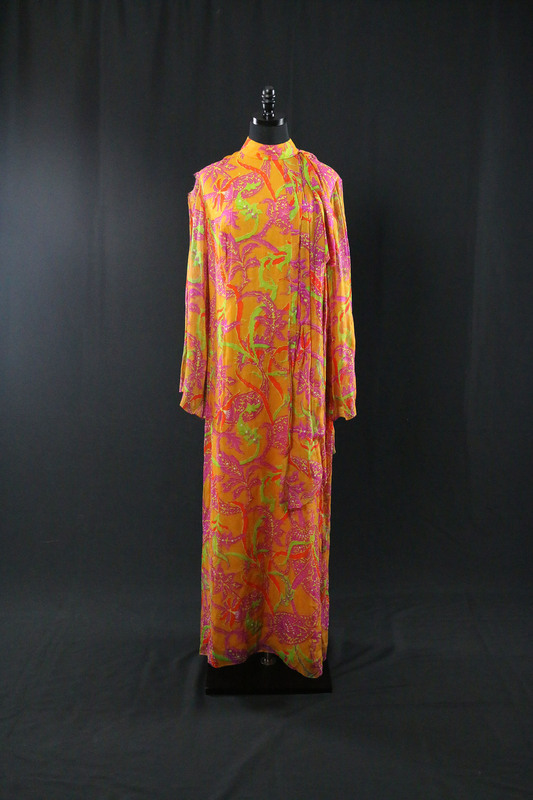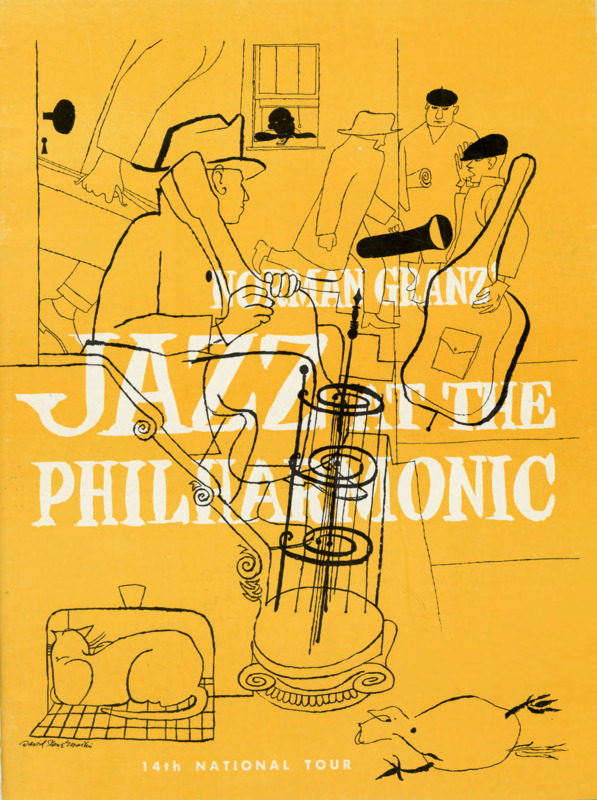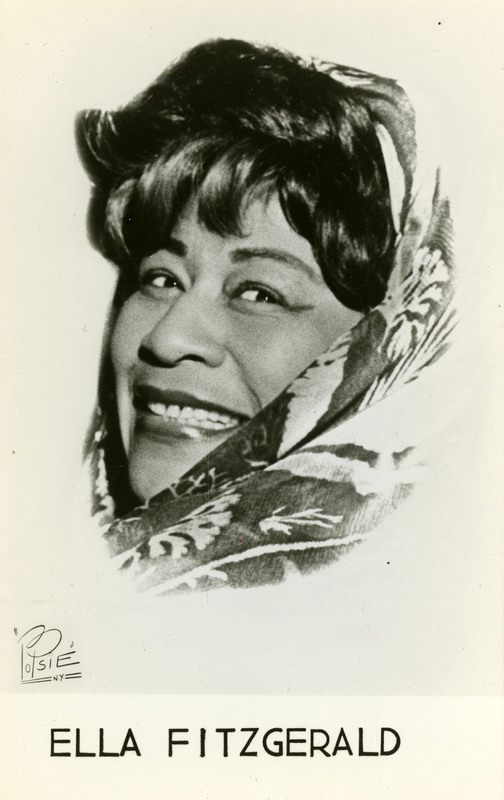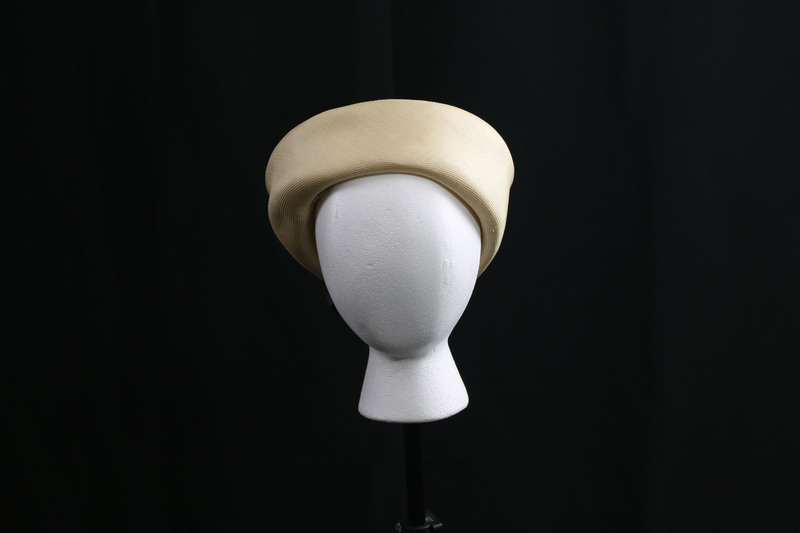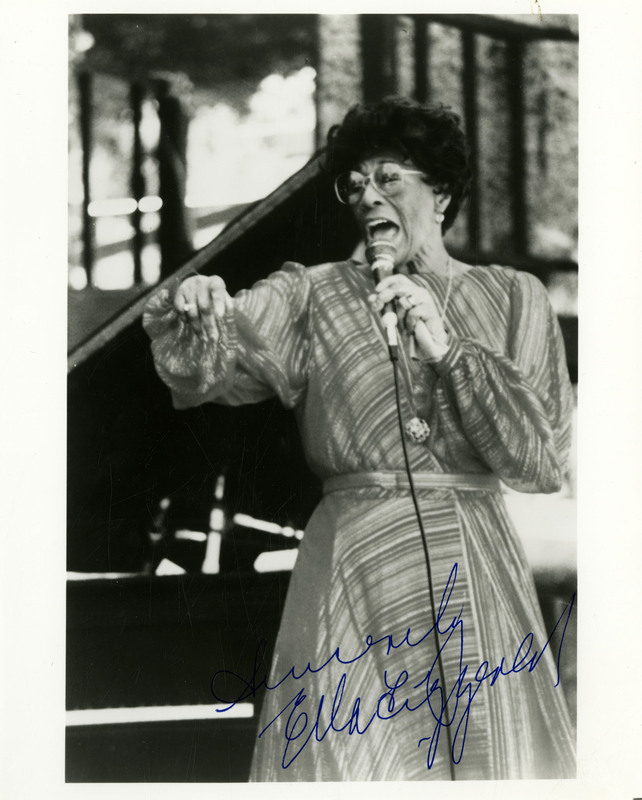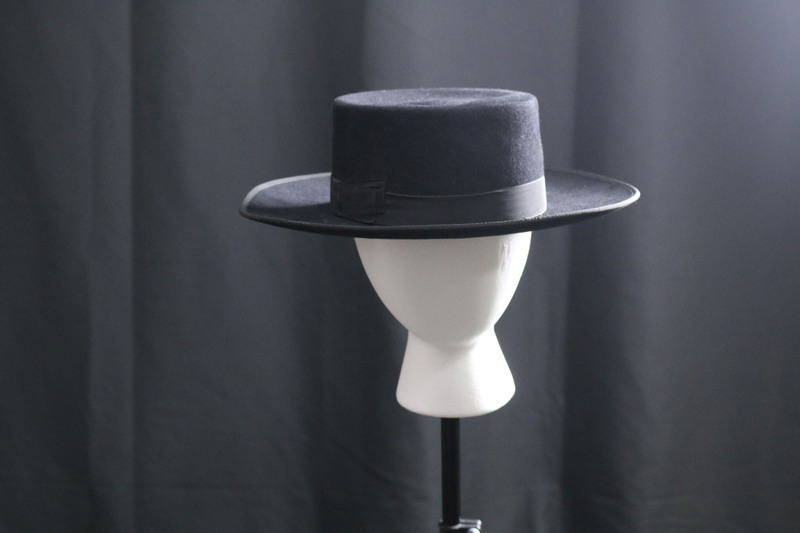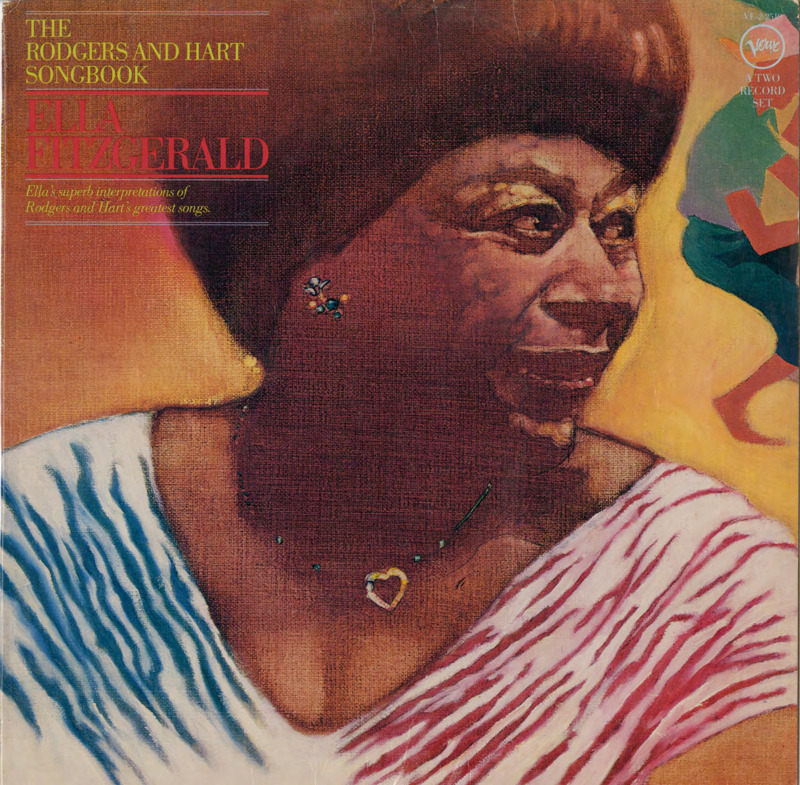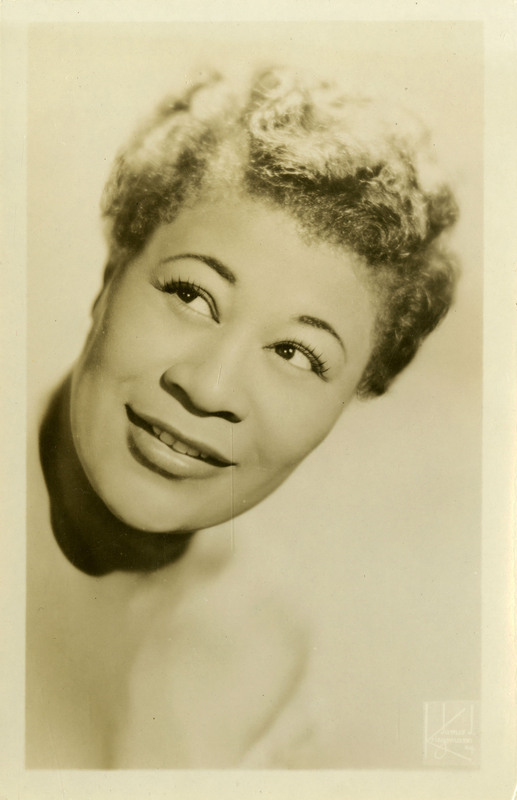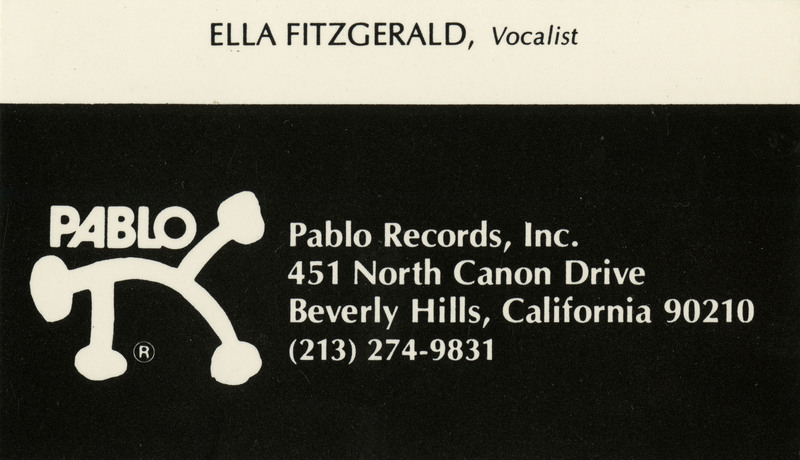Ella Fitzgerald Collection
Celebrating Fitzgerald's fashion and style through her clothing, photographs, and album covers
Contents: About the Collection | About Ella Fitzgerald | Collection Highlights | Tech
About the Collection
This digital collection was created using materials from the Collection on Ella Fitzgerald from the University of Idaho Library’s International Jazz Collections. The collection consists primarily of materials donated by the Estate of Ella Fitzgerald, including photographs, posters, record covers, and clothing, as well as a few materials donated by others relating to Ella Fitzgerald.
About Ella Fitzgerald
Essay by Berry International Jazz Fellowship Recipient Destiny Angel-Hubble
Ella Jane Fitzgerald, also known as “the first lady of song,” is loved by jazz listeners worldwide. Known for her beautiful ballads, her fiery bebop scat solos, and her ability to connect with anyone through song, Fitzgerald had a career lasting more than 6 decades and sang with dozens of her contemporaries, including Duke Ellington, Dizzy Gillespie, Louis Armstrong, Count Basie, and many more. The University of Idaho’s International Jazz Collection obtained her artifacts through the Estate of Ella Fitzgerald.
For icons like Fitzgerald, the way one dresses can greatly affect how they are viewed. From 1935-1939 Fitzgerald toured with drummer Chick Webb and his band. During this time the band saw great success but Webb didn’t initially want to take on Fitzgerald due to her appearance. Before joining the band Fitzgerald had been homeless and spent time in a reformatory school for girls, but she began to add more glamorous pieces to her wardrobe as her fame grew.
A key figure in helping Fitzgerald reach the stardom we see her as having today is her manager, Norman Granz. Before signing with Granz, Fitzgerald recorded exclusively for Decca Records. Granz believed Decca had not realized Fitzgerald’s true potential and after waiting for Fitzgerald’s contract with Decca to end Granz and Fitzgerald started their partnership. Under Granz’s record label, Verve, Fitzgerald reached heights like never before. As her stardom grew so did her budget for glamorous evening gowns. This dress was designed by the famous Don Loper whose designs are said to have inspired the original Barbie Doll:
Fitzgerald spent most of her life touring. Fitzgerald often lamented that she wanted to spend more time at home with family but she could not stay off the stage. Under the direction of her manager Norman Granz, Fitzgerald was often touring 40-50 weeks out of the year regularly playing two shows in different cities a day.
Of the tours she did, the Jazz at the Philharmonic (JATP) tours stand out. JATP was a series of tours in America and Europe featuring the best jazz musicians of the time active between 1944 and 1983. These tours were an important part of Fitzgerald’s career, but the cities they visited were not always so kind to the group of performers. While playing a show in Houston, Texas in 1955 Fitzgerald and several other musicians were arrested in their dressing room for “gambling.” While a few musicians were playing craps in the dressing room, gambling was not the true reasoning for their arrest. Houston Police had been notified that Norman Granz and Saxophonist Illinois Jacquet were desegregating that night’s show, and therefore took any opportunity to stop the show from happening.
Though Fitzgerald faced many hardships like racism and fatphobia, she always continued to sing beautiful music for everyone. From great jazz musicians to casual listeners we all have to thank Fitzgerald for the humanity she always put into her music.
Collection Highlights
Explore the items below to learn more about Fitzgerald’s fashion choices.
The following is a postcard with a photo of Ella Fitzgerald taken by the famous music photographer William ‘Popsie’ Randolph. Popsie was a photographer active between 1940 and 1970 and photographed many different jazz musicians, celebrities, and athletes. Popsie is known for photographing stars in a way that captured their personality and helped define their personal style.
Below is a pillbox hat owned by Ella Fitzgerald. The pillbox hat became a popular accessory in the 1960’s after former First Lady, Jackie Kennedy Onnasis made it her signature style. This style of hat stood for sophistication and fashion.
Fitzgerald had been a star long before she signed with Verve, but when she started recording a series of eight albums, called The Songbook Albums, with Verve, her jazz icon status was truly solidified. This Rodgers and Hart Songbook album was the second installment of Ella Fitzgerald’s Songbook series with Verve Records.
Below is a postcard with a photograph of Ella Fitzgerald by James J. Kriegsman. Kriegsman was a photographer active between 1928 and 1960, and was known for his timeless headshots of celebrities.
Ella Fitzgerald’s business card from Norman Granz’s record label, Pablo Records. Pablo Records is named after the artist Pablo Picasso who was close friends with Norman Granz. Fitzgerald recorded with Pablo Records between 1966 and 1989.
Aquamarine heels owned by Ella Fitzgerald, designed by Ansonia. Fitzgerald used to tap her left foot while she was performing, so the right heel on these shoes leans to the left due to more weight being put on the left shoe over time.
Collection Curator
This collection was produced by Destiny Angel-Hubble, University of Idaho 2021 Berry International Jazz Fellow. Destiny is a senior studying music performance and jazz studies. She moved to Nampa, Idaho in the seventh grade to live with her aunt, where she started her journey with music. Often the only woman in an ensemble, a major part of Destiny’s journey in college has been advocating for women in music, and she hopes her presence in male-dominated spaces encourages young women to pursue music. Coming close to the end of her senior year, Destiny has a slew of ideas for what the future might hold, and is interested in auditioning for cruise ships, working in libraries, or freelancing. Whatever she might end up doing post graduation, she believes that music will always be a major part of her life and will continue to shape who she is as a person.
Destiny first attended the Lionel Hampton Jazz Festival at the University of Idaho in 2017 to hear one of her favorite artists, Esperanza Spalding, who was the headliner that year. This concert inspired Destiny to pursue music in higher education, and while she still loves the night concerts, one of her favorite parts of the festival now is volunteering. She loves getting to know local musicians and pick their brains on all things music-related.
As the 2021-2022 Berry International Jazz Collection Fellow, Destiny worked with the University of Idaho Special Collections’ Ella Fitzgerald collection to produce this digital collection, a workshop presentation, and a physical archival exhibit, all of which tell parts of Fitzgerald’s story most fans might not know about through the lens of fashion. Destiny believes discussing exciting things like fashion help to grab people’s attention and help them understand large issues like sexism, fatphobia, and racism. After this process, Destiny hopes to continue to learn and educate herself and others on these issues.
Technical Credits - CollectionBuilder
This digital collection is built with CollectionBuilder, an open source framework for creating digital collection and exhibit websites that is developed by faculty librarians at the University of Idaho Library following the Lib-Static methodology.
Using the CollectionBuilder-CSV template and the static website generator Jekyll, this project creates an engaging interface to explore driven by metadata.

